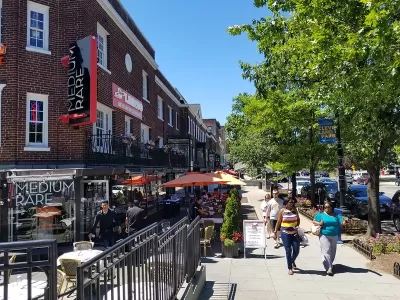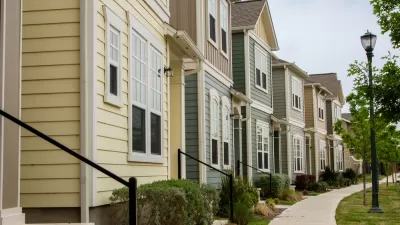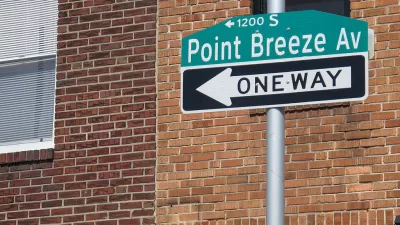How one historic district in a growing corner of Washington, D.C. is able to effect downzoning.

Nick Sementelli, Alex Baca, and Michael Whelan introduce a case study in development opposition in Washington, D.C. with the following:
When ANC 3C passed a resolution this year in support of more density along Connecticut Avenue in Cleveland Park, it was a significant moment. The neighborhood is a textbook example of a wealthy area that has preserved its exclusivity through low-density zoning, which largely makes illegal anything but single-family homes—especially on residential streets.
According to the article, the neighborhood has been growing while adding nearly no new housing, "let alone subsidized or income-restricted affordable housing."
The neighborhood is one targeted by proposed amendments to the district's Comprehensive Plan—the specific change proposed for Cleveland Park would allowed increased density with discretionary approval.
The key to this case study, however, is the additional hurdle facing potential developments in Cleveland Park.
Even after navigating the zoning process to appeal for a higher-density allowance, new projects will still have to conform to the limitations of the neighborhood’s historic district, which, in addition to its goal of preserving history, was designed specifically to limit that exact kind of density.
According to the article, the Cleveland Park Historic District has a track record of achieving downzonings for developments relative to the zoned capacity for development in the neighborhood. The example offered by the article is the Macklin, which sought to add an additional building to an existing 17-unit apartment building located two blocks from the Cleveland Park Metro station.
In the process of winning approvals, the historic district achieved three rounds of cuts from the developers original proposal for the property—for "custom zoning" (which cut 27 units from the building), a "pre-emptive concession" (which raised the number of cut units to 41), and a final cut by the district's board (for a total of 42 units cut from the project). All of this was achieved, according to the article despite the fact that "Ostensibly, historic designation in DC is supposed to have nothing to do with the land use regulations of a property." The source article includes the key details about how the building arrived to its final tally of 34 new housing units.
FULL STORY: How Cleveland Park’s historic district cost the neighborhood 42 homes in one project

Trump Administration Could Effectively End Housing Voucher Program
Federal officials are eyeing major cuts to the Section 8 program that helps millions of low-income households pay rent.

Planetizen Federal Action Tracker
A weekly monitor of how Trump’s orders and actions are impacting planners and planning in America.

Ken Jennings Launches Transit Web Series
The Jeopardy champ wants you to ride public transit.

Crime Continues to Drop on Philly, San Francisco Transit Systems
SEPTA and BART both saw significant declines in violent crime in the first quarter of 2025.

How South LA Green Spaces Power Community Health and Hope
Green spaces like South L.A. Wetlands Park are helping South Los Angeles residents promote healthy lifestyles, build community, and advocate for improvements that reflect local needs in historically underserved neighborhoods.

Sacramento Plans ‘Quick-Build’ Road Safety Projects
The city wants to accelerate small-scale safety improvements that use low-cost equipment to make an impact at dangerous intersections.
Urban Design for Planners 1: Software Tools
This six-course series explores essential urban design concepts using open source software and equips planners with the tools they need to participate fully in the urban design process.
Planning for Universal Design
Learn the tools for implementing Universal Design in planning regulations.
Heyer Gruel & Associates PA
Ada County Highway District
Institute for Housing and Urban Development Studies (IHS)
City of Grandview
Harvard GSD Executive Education
Toledo-Lucas County Plan Commissions
Salt Lake City
NYU Wagner Graduate School of Public Service





























